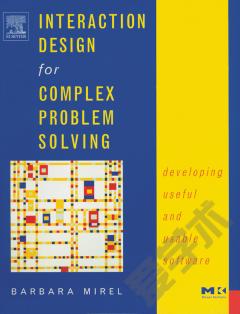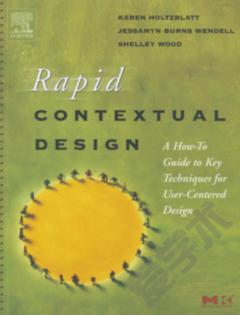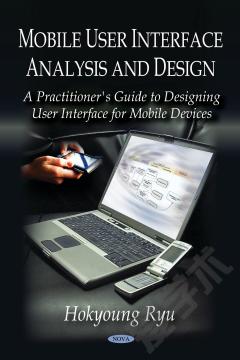Paper Prototyping —— The Fast and Easy Way to Design and Refine User Interfaces
----- 论文原型:设计和完善用户界面的快速简便方法
Do you spend a lot of time during the design process wondering what users really need? Do you hate those endless meetings where you argue how the interface should work? Have you ever developed something that later had to be completely redesigned? Paper Prototyping can help. Written by a usability engineer with a long and successful paper prototyping history, this book is a practical, how-to guide that will prepare you to create and test paper prototypes of all kinds of user interfaces. You'll see how to simulate various kinds of interface elements and interactions. You'll learn about the practical aspects of paper prototyping, such as deciding when the technique is appropriate, scheduling the activities, and handling the skepticism of others in your organization. Numerous case studies and images throughout the book show you real world examples of paper prototyping at work. Learn how to use this powerful technique to develop products that are more useful, intuitive, efficient, and pleasing: * Save time and money - solve key problems before implementation begins * Get user feedback early - use it to focus the development process * Communicate better - involve development team members from a variety of disciplines * Be more creative - experiment with many ideas before committing to one *Enables designers to solve design problems before implementation begins *Five case studies provide real world examples of paper prototyping at work *Delves into the specifics of what types of projects paper prototyping is and isn't good for. Table of Contents Foreword by Jakon Nielsen Acknowledgments Part I-Introduction to Paper Prototyping Chapter 1: Introduction Chapter 2: Case Studies Chapter 3: Thinking about Prototyping Chapter 4: Making a Paper Prototype Part II-Process: Conducting a Usability Study with a Paper Prototype Chapter 5: Planning a Usability Study with a Paper Prototype Chapter 6: Task Design Chapter 7: Preparing the Prototype Chapter 8: Introduction to Usability Test Facilitation Chapter 9: Usability Testing with a Paper Prototype Chapter 10: Observers Chapter 11: Data: Capturing, Prioritizing, and Communicating Part III-Deciding Whether to Use Paper Chapter 12: What Paper Is (and Isn't) Good For Chapter 13: The Politics of Paper Prototyping Chapter 14: When to Use Paper Part IV-Broadening the Focus Chapter 15: Examples of User-Centered Design Chapter 16: Final Thoughts References Index Figure Credits About the Author
{{comment.content}}








 京公网安备 11010802027623号
京公网安备 11010802027623号